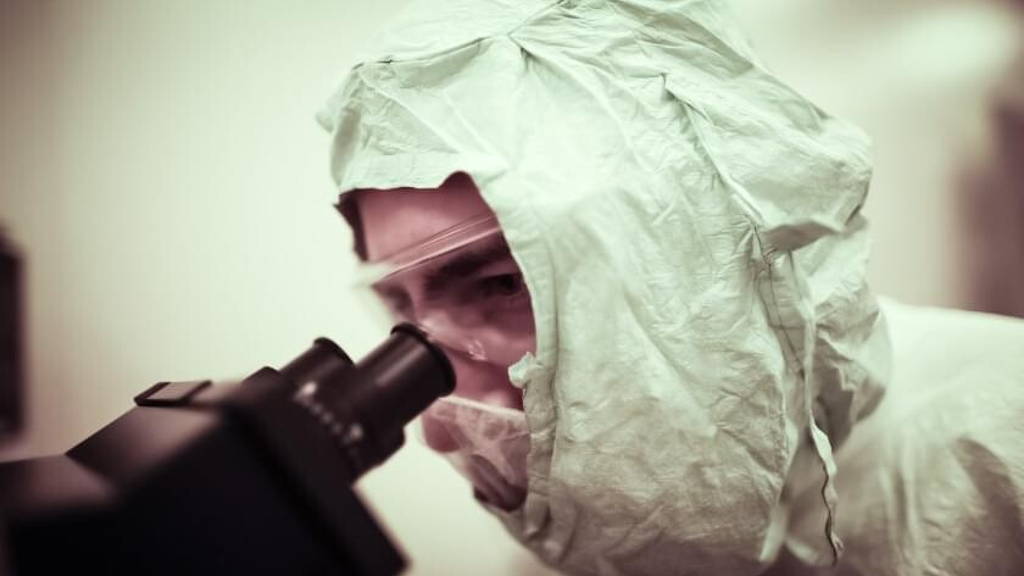Nucleation processes are a first step in the structural rearrangement involved in the phase transition of matter: a liquid morphing into a gas, a gas becoming a liquid et cetera. Clouds, boiling water, bubbles, and some disease stages are all characterized by the formation of a new thermodynamic phase which requires some of the smallest units of the new structure to form before this new phase can grow.
Understanding this process is critical for preventing, halting or treating cases of nucleation processes gone wrong -- such as in human disease. With this in mind, research teams from UK’s University College London and the University of Cambridge, and US Harvard University have set out to try and understand this problem from a molecular point of view in a new study.
Their findings are significant across an array of phenomena, from human disease to nanotechnology. The results of the study will appear this week in The Journal of Chemical Physics, from AIP Publishing.
“As commonly observed, if this group of dancers is too small, it tends to be ignored; however, above a certain size, this dancing nucleus attracts more and more people, eventually dominating the room," adds Thomas Michaels, the other lead co-author. This minimum number of dancing people required to transform the party is what in thermodynamic terms is commonly known as the "critical nucleus."
Unfortunately, protein filaments can also be at the base of many diseases: Over 50 common disorders, including Alzheimer’s disease, Parkinson’s disease, and Type 2 diabetes, are associated with the formation and deposition in the brain or other organs of protein filaments commonly known as amyloids.
“Understanding which microscopic-level steps are determining for the formation of protein fibrils can provide invaluable information for designing rational therapies aimed at suppressing pathogenic oligomer generation."
Understanding this process is critical for preventing, halting or treating cases of nucleation processes gone wrong -- such as in human disease. With this in mind, research teams from UK’s University College London and the University of Cambridge, and US Harvard University have set out to try and understand this problem from a molecular point of view in a new study.
Their findings are significant across an array of phenomena, from human disease to nanotechnology. The results of the study will appear this week in The Journal of Chemical Physics, from AIP Publishing.
Example of nucleation
“Perhaps an intuitive example of nucleation would be the way in which a quiet dinner party suddenly transforms into a dancing one; such a transition usually requires several people to start dancing at once, acting as a 'nucleus' around which the dancing party assembles,” explained An?ela Šari?, lead co-author at the University College London and the University of Cambridge.“As commonly observed, if this group of dancers is too small, it tends to be ignored; however, above a certain size, this dancing nucleus attracts more and more people, eventually dominating the room," adds Thomas Michaels, the other lead co-author. This minimum number of dancing people required to transform the party is what in thermodynamic terms is commonly known as the "critical nucleus."
Formation of protein filaments
In their research, the team dives into what they call particularly intriguing example of a nucleated process: the formation of protein filaments. Many filamentous structures of proteins such as actin and tubulin are key for the growth, structural formation, movement and division of cells. They are an essential characteristic of living systems.Unfortunately, protein filaments can also be at the base of many diseases: Over 50 common disorders, including Alzheimer’s disease, Parkinson’s disease, and Type 2 diabetes, are associated with the formation and deposition in the brain or other organs of protein filaments commonly known as amyloids.
Fundamental physical principles
With a combination of theory and computer simulations the authors explored the nucleation of protein filaments. Their goal: to establish the fundamental physical principles behind the process. Their results show that a seemingly complicated process of fibril nucleation is actually governed by a relatively simple physical mechanism: Unorganized clusters of proteins -- so-called oligomers -- are formed initially. These structures have to undergo a structural conversion before they can grow into mature protein filaments, Šari? explained. They found that among many different steps in fibril nucleation, the shape change inside oligomers is the rate-determining step. Therefore, conformational changes in the protein inside oligomers (leading to the formation of ?-sheet configurations) are crucial to understand fibril nucleation. Previously, the size of critical nucleus was considered the rate-determining factor.Mechanistic understanding
The study represents an important step forward in the mechanistic understanding of the way in which protein filaments form, Šari? states. Such an understanding is key for studying the early stages in the onset of diseases associated with protein aggregation, as oligomers are increasingly believed to be the prime cause for cellular toxicity.“Understanding which microscopic-level steps are determining for the formation of protein fibrils can provide invaluable information for designing rational therapies aimed at suppressing pathogenic oligomer generation."






